Categories
- animatronics (12)
- apple (11)
- arduino (179)
- art (41)
- articles (121)
- artificial intelligence (11)
- automation (421)
- avr (205)
- bitcoin (3)
- breadboard (9)
- cameras (57)
- cars (26)
- cell phones (28)
- clothing mods (21)
- console mods (26)
- dangerous (94)
- desktop mods (24)
- embedded (5)
- flying things (54)
- fpga (22)
- gaming creations (108)
- interface (225)
- internet (17)
- laptop mods (6)
- lasers (22)
- linux (7)
- magnetic (3)
- medical (12)
- microcontrollers (51)
- misc projects (152)
- msp (12)
- music (124)
- pic (90)
- projects (23)
- pyroedu (76)
- raspberry pi (26)
- robots (312)
- security (36)
- sensors (307)
- software (200)
- solar (19)
- stamp (9)
- tools (149)
- tutorials (98)
- Uncategorized (45)
- usb (44)
- wireless (256)
Sponsors

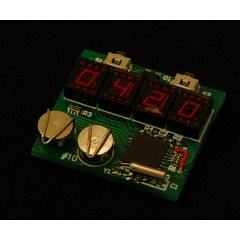
Posted March 22, 2015 by Chris
"Sure, this doesn’t use a vacuum tube, but it’s still a neat way to reuse some old-fashioned 7-segment LED displays. OK, so I can’t wear it yet. It still needs a case and watch band.The LED displays are quite tiny and would have been used for calculators or similar devices back in the day."
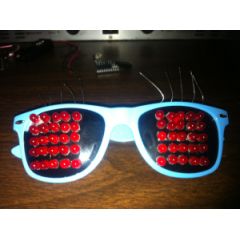
Posted March 10, 2015 by Chris
"Well, that time has come and they are finally finished. However, they look a little rough. I am still quite pleased with the overall product and will most likely be making a second pair. Got the idea from this awesome How-to.."
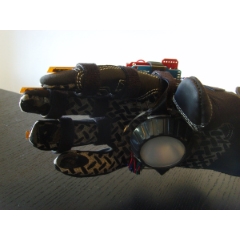
Posted January 25, 2015 by Chris
"I wanted to play around with the idea of composing color by utilizing the color-combining RGB LEDs. Using 3 different variable resistors I could adjust the levels of Red, Green, and Blue color elements separately. I was exploring the idea of actively ‘composing’ color for use in software like Photoshop, Illustrator, or some other art program. This glove is a self-contained first-step towards this kind of color control."
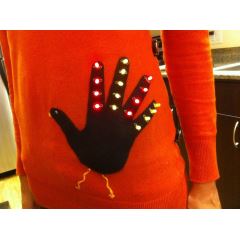
Posted November 15, 2014 by Chris
"So I decided to give Thanksgiving the attention it deserves. As a kid, I loved making decorations for the Thanksgiving table. I thought whoever came up with the idea that your hand could be traced and transformed into a turkey was a genius…Which is how the idea struck me, and I embarked on my second e-textile project: a LED hand turkey sweater."
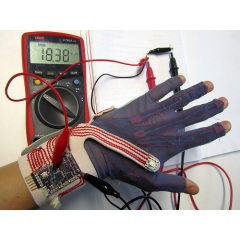
Posted January 30, 2014 by Chris
"The Gloves are a cutting edge experimental gestural music ware being developed today for the purpose of Imogen Heap’s studio and stage work. Using a unique gestural vocabulary, motion data-capture systems, and user interfaces to parameter functions developed by Imogen Heap and her team, artists and other users will be able to use their motion to guide computer-based digital creations."
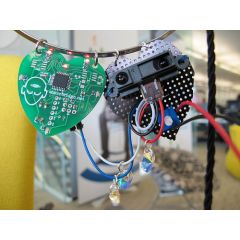
Posted January 15, 2014 by Chris
"For the past few weeks I’ve been working on the first stage of a project that involves hacking Eric Boyd’s excellent Heart Spark PCB pendant and combining it with a sensor module I’ve made from scratch."
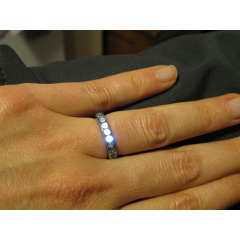
Posted December 2, 2013 by Chris
"The final idea was to embed a LED and copper coil assembly inside the titanium ring, illuminating it from under the stones when it was in close proximity to an induced alternating magnetic field. Autodesk Inventor helped me develop all of the dimensions and constraints for the design. Having some help, I was able to obtain her ring size and the rest of the measurements were based from there. "
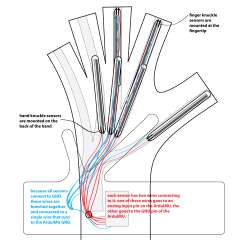
Posted September 4, 2013 by Chris
“Make your very own pair of The Gloves! This step-by-step tutorial takes you through the process of building (and customizing) your own pair of DIY Data Gloves.”
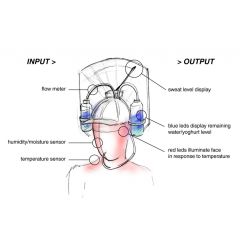
Posted February 10, 2013 by Chris
“The 48h project consisted of building a helmet device with humidity, temperature and fluid intake sensors, used to record and measure the reaction of nuclear taco victims of Codebits 2011 Nuclear Taco Challenge. The sensors and servos are connected by Arduino. 6 timelapse videos were recorded documenting the user experience. The host displayed using face substituion technology in realtime.”
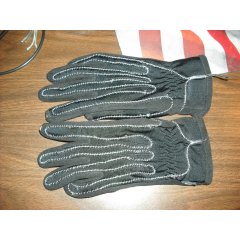
Posted January 8, 2013 by Chris
“At the end of the last cold season, I decided I’d make another pair of liners, this time with only one 5′ strand of nichrome wire…A short test on the bike proved I now had heated liners that allowed me to use more than the lowest setting on the controller. I guess these are Glove Liners 2.1.”






